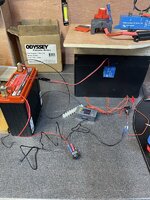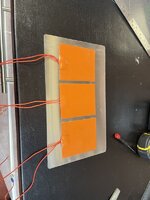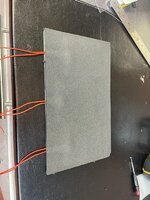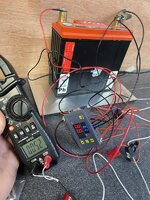Has anyone attempted to fit heat pads to their Lithium battery?
I have a digital relay (thanks @Dellmassive) and three heat pads wired in parallel.
My question is, where best to place the pads? Under the battery or somehow attach them to the sides?
Here the pads are set under the battery - given it's in a plastic casing, not sure this is the most efficient method?

I have a digital relay (thanks @Dellmassive) and three heat pads wired in parallel.
My question is, where best to place the pads? Under the battery or somehow attach them to the sides?
Here the pads are set under the battery - given it's in a plastic casing, not sure this is the most efficient method?






